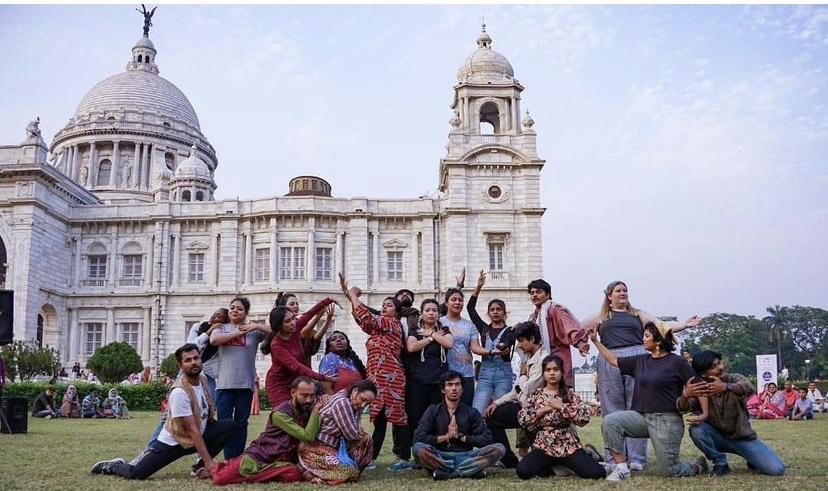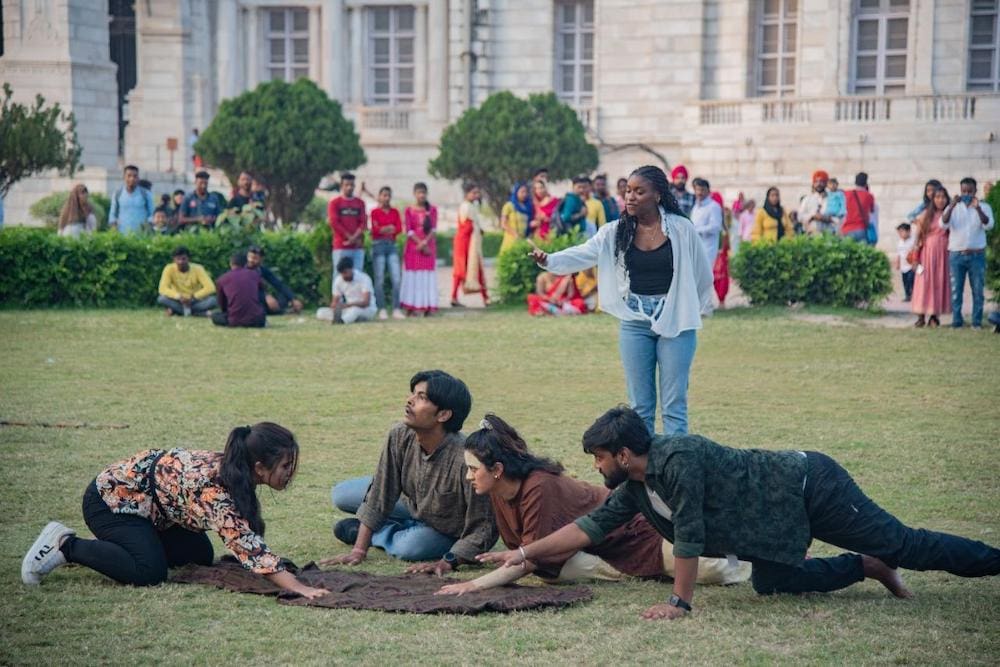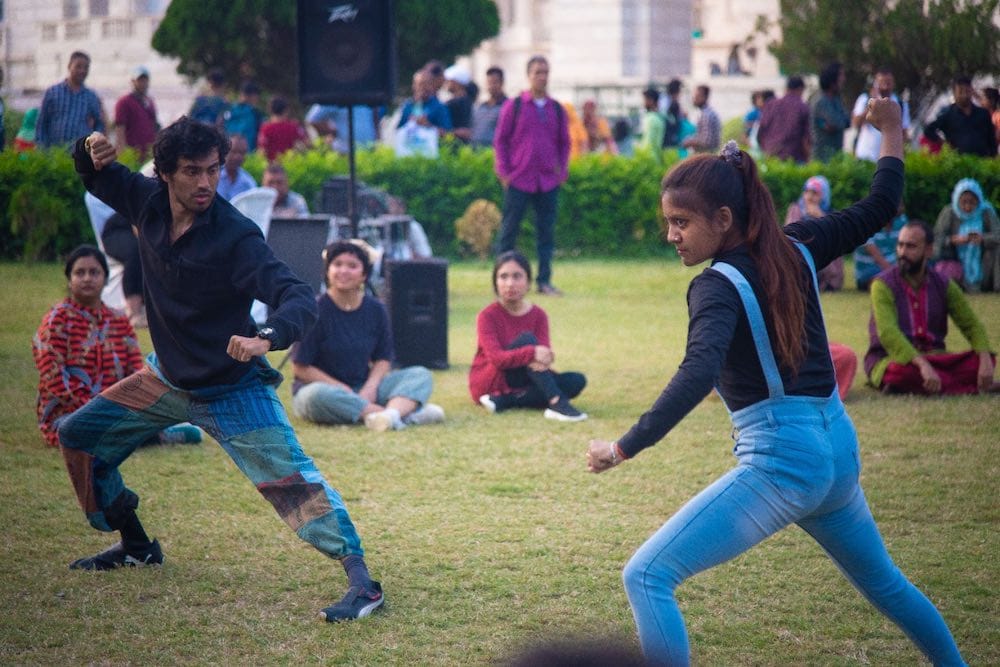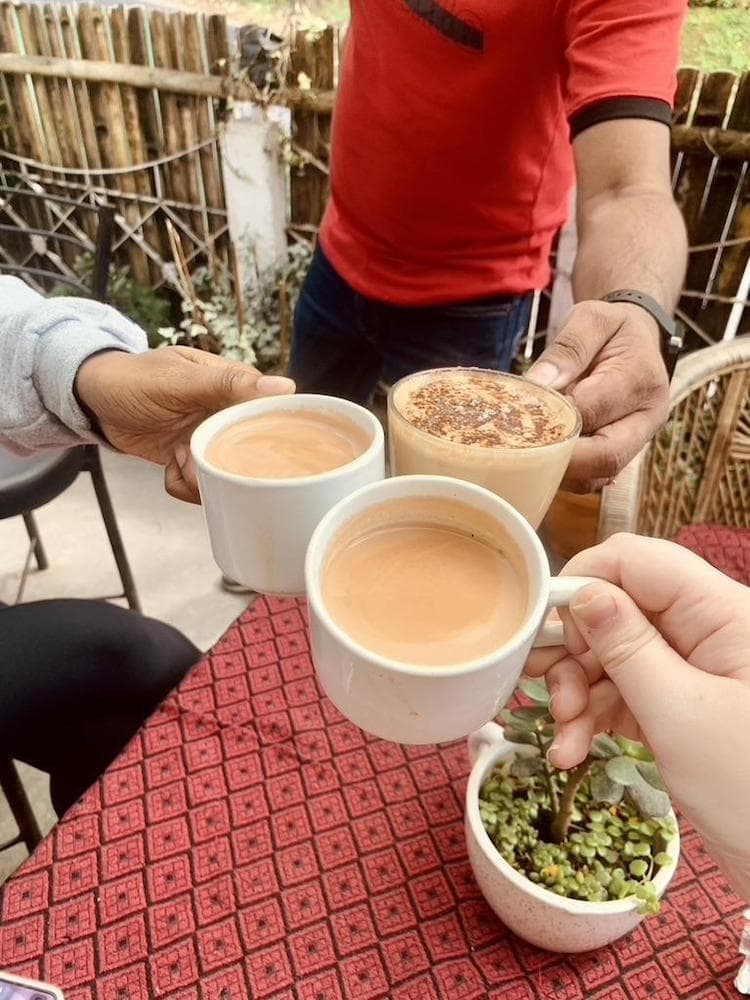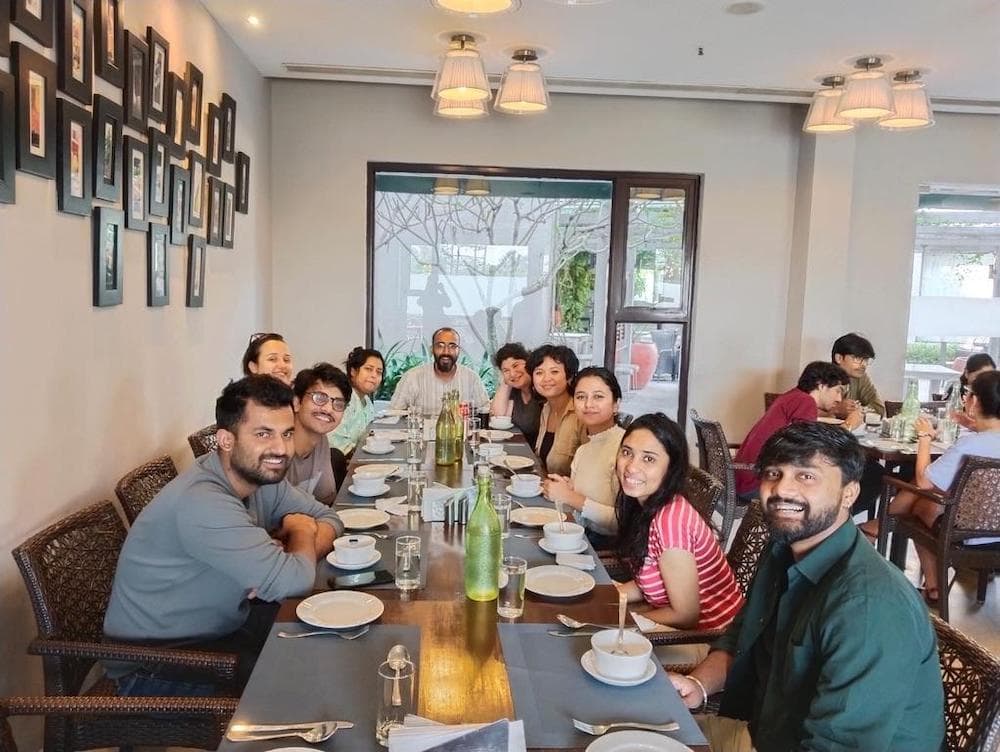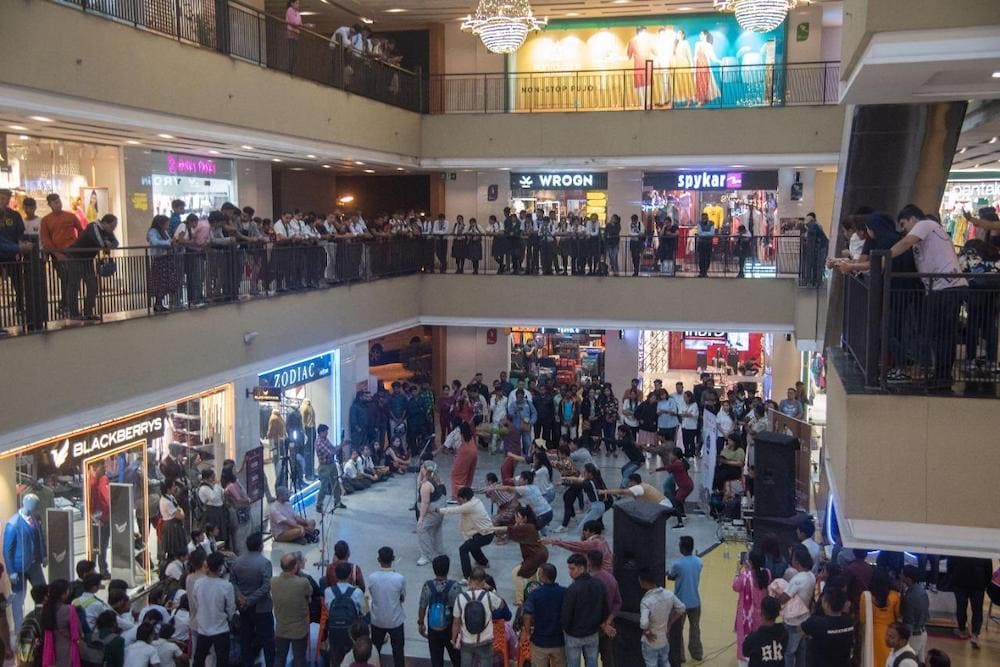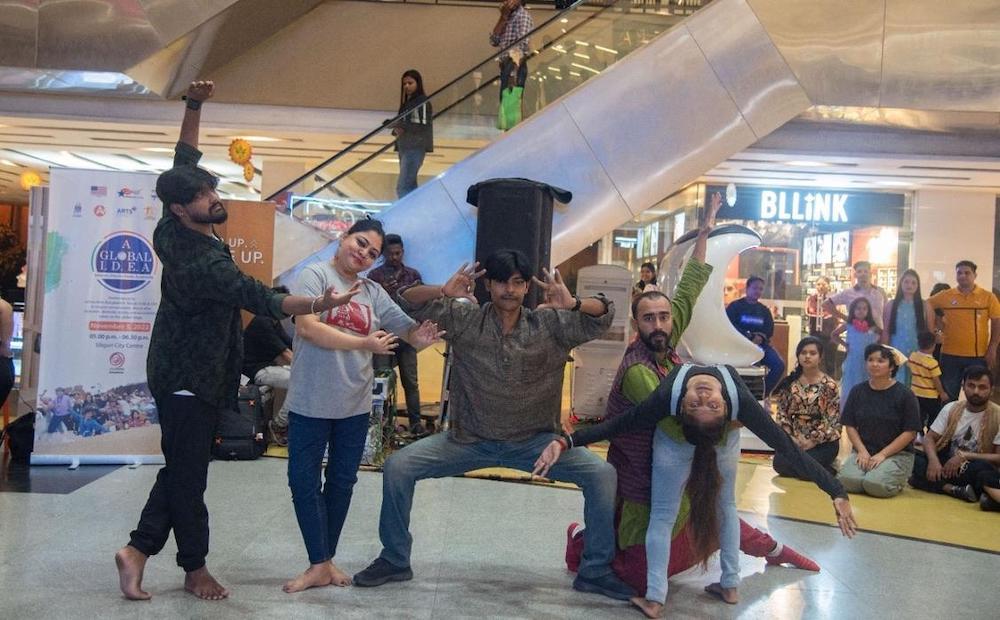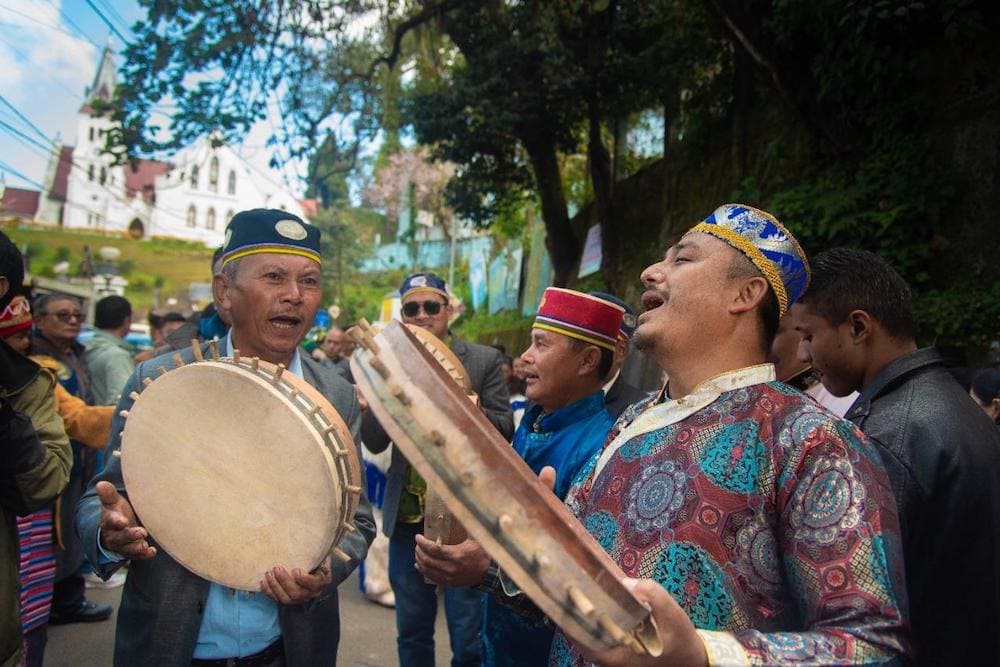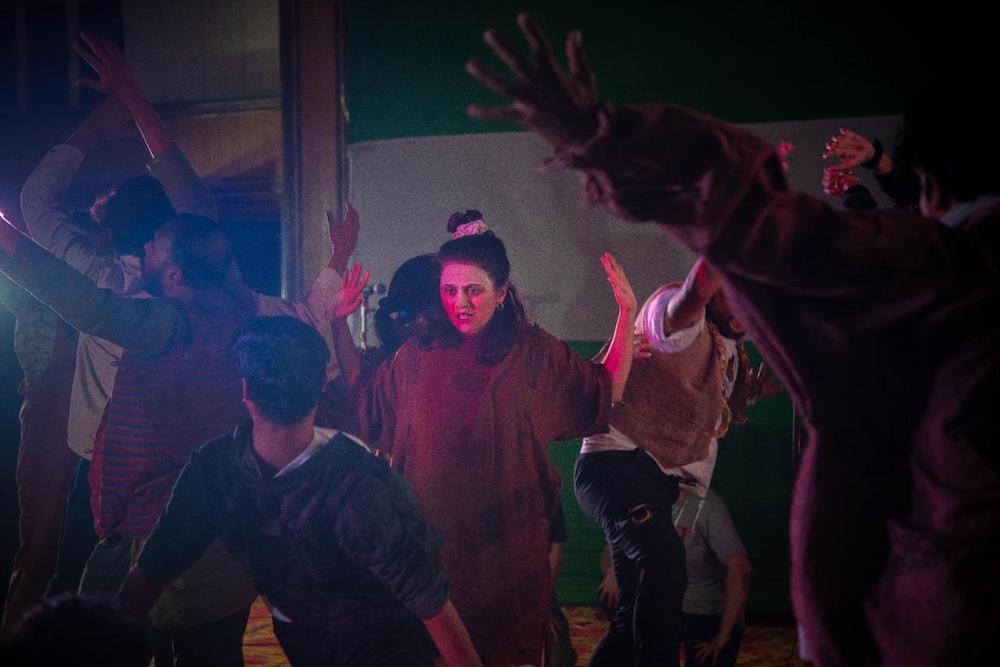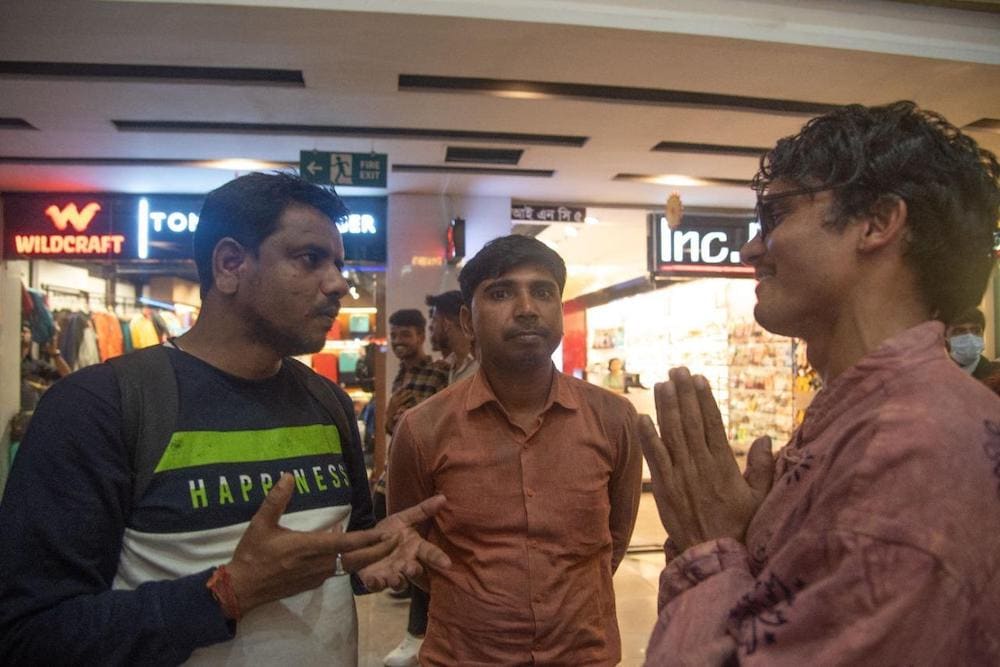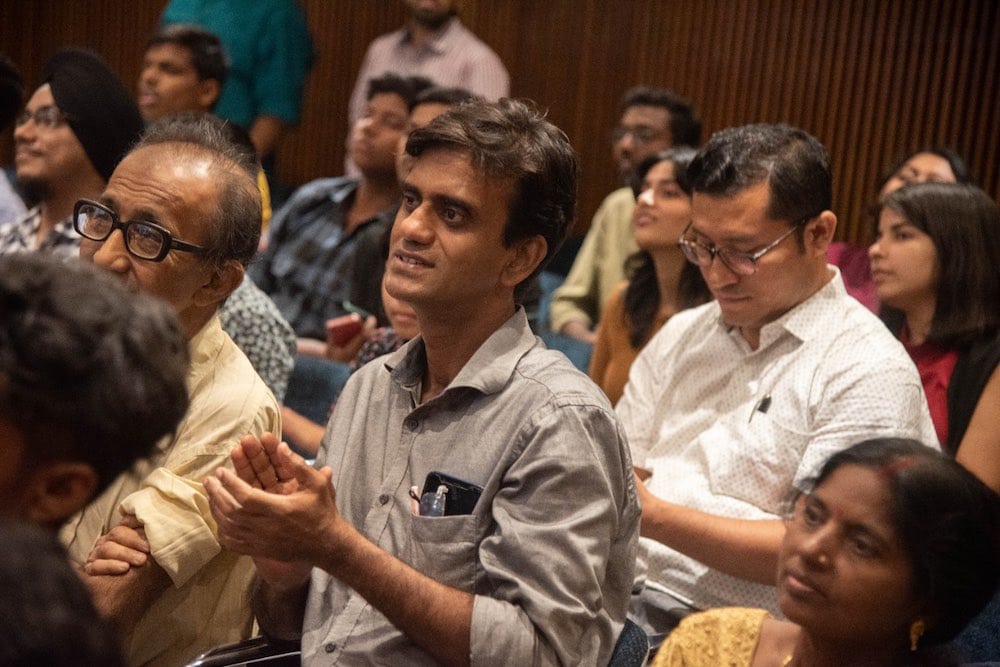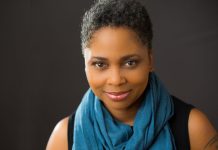By Ezinne Elele
In August of 2022, I was contacted by Raymond Caldwell, the artistic director of Theater Alliance, asking if I was interested in joining a few other actors on a three-week U.S. State Department-sponsored trip to India to create work around diversity. I didn’t even think to ask what exactly the work would entail before agreeing to go. Unbeknownst to me, this had been a project years in the making and would truly become a once-in-a-lifetime experience.
The Idea: actors, teachers, martial artists, rappers, dancers, social workers, and writers from Bangladesh, India, America, and Nepal would all gather to create a devised piece, a touring play to encourage conversation on the state of Inclusion, Diversity, Equity, and Accessibility in our countries. The project was developed as a partnership between the U.S. State Department and the Indian NGO Contact Base. After an initial residency in Kolkata, we would tour the play to the Indian towns of Siliguri, Kalimpong, and Darjeeling, performing and facilitating meaningful dialogue within the varied communities. Originally the project was planned for 2020, but the pandemic had seemingly put a halt on the possibility of any of this coming together. But two years later, at the tail end of Diwali, the festival of lights, there we were in Kolkata, India, together.
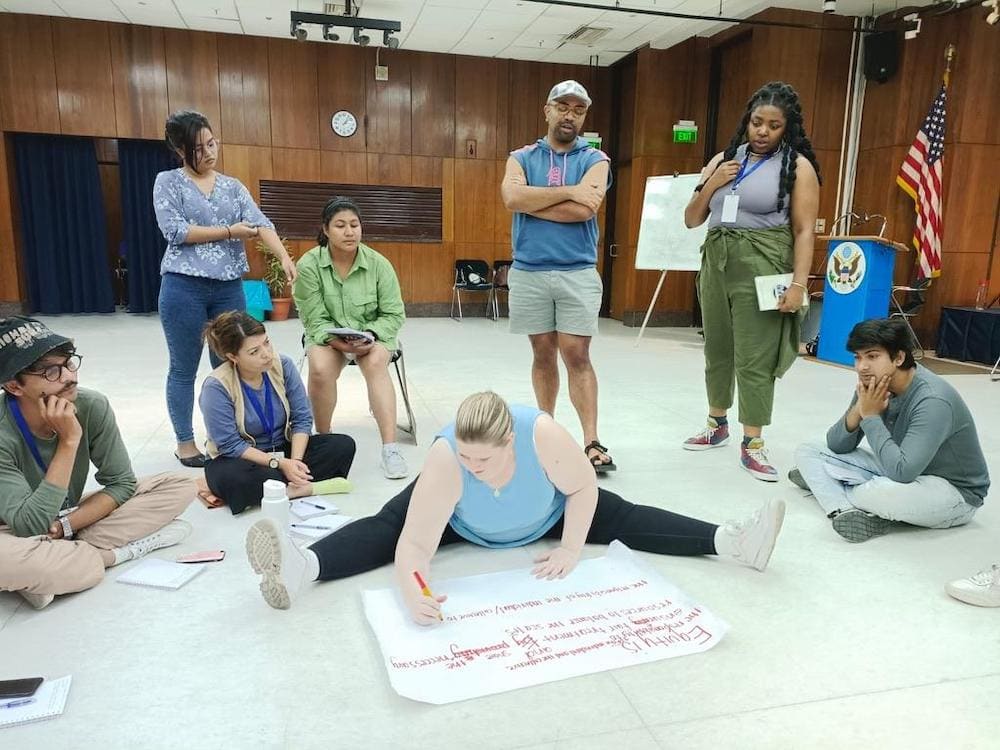
As we stood in front of Kolkata’s famed Victoria Memorial with a crowd of onlookers around us, it hardly felt real that in the next few moments, the show we’d only just finished building would be up on its feet. Waiting for the cue to start, as we ran lines and recalled last-minute changes, I couldn’t help but think about what a strange moment this was. There we were about to perform a show in four different languages — five if you included the Nepali Sign Language pieces — addressing the history of colonized nations in front of one of the largest monuments of colonization in India. We had no idea how it would be received, and though we had been assured by our leads that the show was good, the resounding approval from our first audience was incredibly gratifying.
My fellow art envoys became more than just acquaintances or coworkers. We had cried over family members, made inside jokes, shared our aspirations and our quiet fears. We were friends. Drinking chai together at street stalls, splitting orders of dumplings around a table of 20, shopping for gifts, and teaching each other dances in our hotel rooms. For all the time we spent together working, it was moments like these where we truly got to know each other.
Our second performance was in the picturesque Bengali city of Siliguri, the third largest city in the state and known as the Gateway of Northeast India. You can’t imagine how different performing at the center of a busy mall was from the open-air lawn of our first performance. Our goal was to tailor each show specifically for the city and venue we were performing at, so for Siliguri we added a poem about the hustle and bustle of the City Mall so similar to any mall you’d see in America. In that enclosed space with its tiered balconies, people could come and go, watching from every angle. The energy of such a large crowd was its own character and we rose to match it, dancing large enough for all to see, making eye contact with people on other floors, as our voices carried over the ambient noise.
In Darjeeling, our show joined the West Bengal Hill Tribal Festival, a celebration of the indigenous people of the West Bengal state. As a company, we had only arrived the afternoon before after a long drive up the winding narrow roads of the Himalayas. After a quick early-morning rehearsal, we tiredly stood with the other performance groups outside the venue, waiting to enter. Suddenly, impromptu, we started parading down the streets of the market into the amphitheater. There were people everywhere dressed in brightly colored traditional clothing. Men played music behind me and I found myself singing along to a chant as in front of me two large snow lion puppets danced.
There were smiling faces all around and we carried that excitement into the next show in the town of Kalimpong nestled in the foothills of the Himalayan mountains and dotted with colonial-era buildings. Again we performed beside the Bhutia, Tamil, Lepcha, Sherpa, and Limba peoples. There was so much to learn about and from each, other and for me language hardly seemed a barrier. It’s stunning how joy and acceptance need no translations.
Even for the final performance, as I juggled the new lines and chores in our ever-changing show, I was most nervous about the post-show conversations. It’s easy to stand on a stage and preach to an audience about all your ideas for the world. But to look someone, a stranger, in the eye and engage them in a real conversation about the work that still needs to be done? That is a whole other ballpark. For many, it was their first time meeting a Black person in real life. It was the hardest bit of the show and yet also the heart of it and the most rewarding part. It’s by trying to get to know someone sincerely, to understand them, their ideas, their culture, their wants, and needs, that we learn and hopefully teach others how to support and advocate for those not like us.
On our last night together, our leads made a point to ask us how we could continue what our play had started in our own lives and countries. We had the information and the skills to replicate the process but it was up to us to decide where it would go from here. After all, this was never a piece that ended when the last line was spoken. It continues to resonate out in each person it touches.
All photos courtesy of Theater Alliance / U.S. Consulate Kolkata.

SEE ALSO:
Theater Alliance and affiliated artists to lead Arts Envoy to India (news story, October 23, 2022)
Theater Alliance announces family-friendly 20th season (news story, November 18, 2023)
About the Wendi Winters Memorial Series: DC Theater Arts has partnered with the Wendi Winters Memorial Foundation to honor the life and work of Wendi Winters, the DC Theater Arts writer who died in the Capital Gazette shooting in Annapolis, Maryland, on June 28, 2018. To honor Wendi’s legacy, the Wendi Winters Memorial Foundation has funded the Wendi Winters Memorial Series, articles to be produced by DC Theater Arts to bring attention to theater companies and theater practitioners in our region who engage in exemplary work that makes our community a better place.
For more information on DC Theater Arts’ Wendi Winters Memorial Series, check out this article graciously published by our friends at District Fray Magazine.


